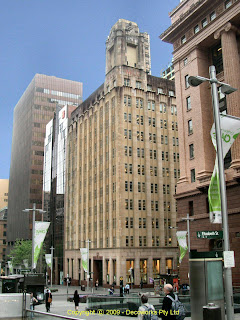Sydney Harbour Bridge

Listed in the RAIA Register of Significant 20th Century Buildings the Harbour Bridge at Milson's Point in Sydney was finished in 1932 and was designed by JJ Bradfield and Sir Ralph Freeman. The design of the impressive 89 metre high ziggaurat pylons, which are primarily decorative, was undertaken by the consulting architects, Sir John Burnet and Partners of London. Thomas Tait, the architect who carried out the work, produced a stripped classical treatment with strong Art Deco components. They are made of concrete, faced with granite, quarried near Moruya, where about 250 Australian, Scottish and Italian stonemasons and their families lived in a temporary settlement. Three ships were specifically built to carry the 18,000 cubic metres of cut, dressed and numbered granite blocks, 300km north to Sydney. Sources: Sydney Heritage Listings





